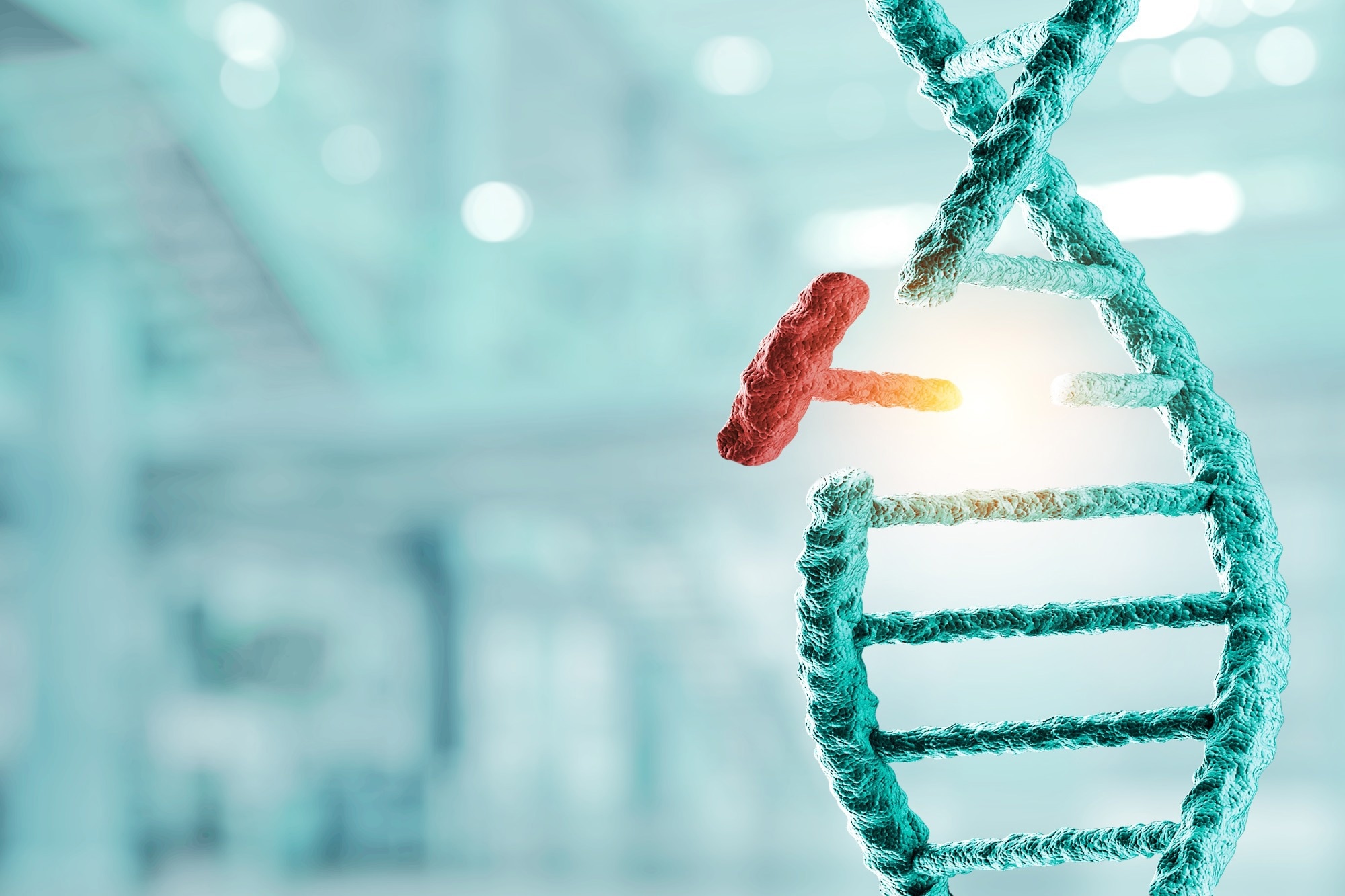 By Pooja Toshniwal PahariaReviewed by Lauren HardakerSep 18 2025
By Pooja Toshniwal PahariaReviewed by Lauren HardakerSep 18 2025In a recent study published in Nucleic Acids Research, researchers mapped dynamic gene expression in mouse mammary glands across pregnancy, lactation, and weaning, creating the first cell type, stage, and parent–of–origin–specific allele atlas.
 Image credit: Sergey Nivens/Shutterstock.com
Image credit: Sergey Nivens/Shutterstock.com
Researchers have catalogued genes with allele-specific and differential expression patterns in mammary transformation, including those linked through human GWAS to lactation challenges and breast cancer. These findings provide a foundation for understanding breastfeeding difficulties and advancing maternal health research.
The mammary gland, which develops primarily after birth, undergoes significant structural and functional changes during pregnancy, lactation, and involution to support the nourishment of offspring. These transitions involve diverse cell types and epigenetic remodeling, yet the transcriptional dynamics driving them remain poorly understood. Genomic imprinting, a parental allele-specific gene regulation mechanism, has been implicated in growth, development, and disease, with several imprinted genes suggested to influence mammary function. However, their roles in lactation remain unclear.
About The Study
The present study established the first high-resolution genetic map (allelome) of the mammary gland by cell type and stage, revealing transcriptional dynamics central to lactation, maternal health, and breast cancer risk.
The team used reciprocal hybrid mouse models to distinguish parentally regulated genetic effects. They studied female hybrids across 10 developmental stages: nulliparous, pregnancy, lactation, and involution. Nulliparous animals were estrus stage-matched, with pregnancy, lactation, and involution stages defined based on mating, parturition, and pup removal.
The researchers dissected mammary glands at each stage, stained whole mounts with carmine for histological validation, and enzymatically digested them to single-cell suspensions. Flow cytometry isolated six main populations: basal, luminal progenitor, luminal differentiated, endothelial, stromal, and adipocytes. Cell sorting and ribonucleic acid (RNA) extraction yielded sequencing libraries, including 480 transcriptomes from 80 animals.
A diploid reference genome incorporating CAST/EiJ variants enabled allele-specific quantification and bioinformatic analysis. Transcriptome profiling identified differentially expressed genes (DEGs) across developmental stages relative to nulliparous controls. Allele-specific analysis determined monoallelic and imprinted gene expression. Principal component (PCA) and gene ontology enrichment analyses investigated transcriptional dynamics.
The study identified 75 imprinted genes expressed in mammary cells, with 25 showing strong allele-specific expression, including several restricted to distinct mammary cell types. Integrating transcriptome data with genome-wide association studies (GWAS), researchers cross-referenced single-nucleotide polymorphisms (SNPs) associated with lactation traits and postpartum breast cancer (PPBC).
Pyrosequencing and quantitative reverse transcription-polymerase chain reaction (qRT-PCR) validated candidate transcripts, supporting molecular associations between mammary development, breastfeeding difficulties, and breast cancer risk.
Results
Transcriptomic profiling revealed that lactation induced the most significant transcriptional changes across epithelial and nonepithelial cell types. Mammary adipocytes emerged as the most distinct population, undergoing unique transcriptional shifts throughout pregnancy, lactation, and involution, and dominating in nulliparous and late involution stages. Immune cells expanded during lactation, while luminal progenitors differentiated to luminal cells.
Among the 25 imprinted genes with monoallelic expression within the mammary glands, several showed strong patterns specific to cell types and stages. For example, while cyclin-dependent kinase inhibitor 1C (CDKN1C) gene expression increased in basal, endothelial, and stromal cells, necdin (NDN) was enriched in stroma, and small nuclear ribonucleoprotein polypeptide N (SNRPN) was abundant in adipocytes.
Dynamic expression was observed in genes such as H19 (in luminal and stromal differentiated cells during pregnancy) and growth factor receptor-bound protein 10 (GRB10), which increases during lactation. Pyrosequencing confirmed allelic bias, validating imprinted expression patterns, including delta-like non-canonical notch ligand 1 (DLK1) and insulin-like growth factor 2 (IGF2). Importantly, no novel imprinted genes were detected, and the selective absence of imprinting observed in brain tissue was not evident in the mammary gland.
DEG analysis identified genes supporting milk production, such as CUGBP, Elav-like family member 2 (CELF2), fatty acid desaturase 1 (FADS1), and fibrillin 2, as highly expressed in luminal cells during lactation. Other upregulated genes included plant homeodomain finger protein 11 (PHF11), 3-hydroxyanthranilate 3,4-dioxygenase (HAAO), family with sequence similarity 126 member A (FAM126A), and sorting nexin 29 (SNX29).
Conversely, the Kit proto-oncogene and genes linked to progenitor activity [sideroflexin 5, conserved oligomeric Golgi complex subunit 3 (COG3), ATPase phospholipid transporting 8A2 (ATP8A2), metastasis-associated-1 family member 3 (MTA3), RCC1, and BTB domain containing protein 1 (RCBTB1)] showed reduced expression, indicating terminal differentiation into milk-producing cells.
The team found 76 genes to be associated with PPBC, with many [matrix metallopeptidase 27 (MMP27), homeobox A5 (HOXA5), gasdermin C, and syntaxin 19] downregulated in luminal cells during involution. Others [such as forkhead box O6 (FOXO6) and heparan sulfate-glucosamine 3-O-sulfotransferase 6 (HS3ST6)] were upregulated and implicated in tumor progression pathways. Luminal cells exhibited the highest number of disease-linked DEGs, consistent with their role in both milk synthesis and breast cancer susceptibility.
Conclusions
The study presents the first comprehensive atlas of parental-origin gene expression in the mammary gland, uncovering imprinting dynamics that shape lactation, maternal well-being, and breast cancer risk.
The study provides evolutionary insights and clinical relevance by pinpointing key imprinted genes, such as CDKN1C and DLK1, and linking gene transcriptional findings with human lactation disorders and postpartum breast cancer.
Notably, the authors interpret their findings as supporting the maternal-offspring coadaptation theory of imprinting, in contrast to the traditional parental conflict model. Future functional and long-read studies will be crucial to translate these discoveries into therapeutic strategies.
Download your PDF copy now!
Journal Reference
Hanin, G., et al. (2025). Dynamic allelic expression in mouse mammary glands across the adult developmental cycle. Nucleic Acids Research, 53(17), gkaf804. DOI: 10.1093/nar/gkaf804. https://academic.oup.com/nar/article/53/17/gkaf804/8248607